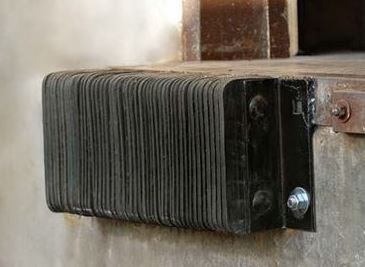Dock Bumpers and Your Loading Dock
There are many options to protect your dock and the trucks that visit, but which will work best?

The loading dock is the heartbeat of any warehouse or distribution center, bustling with activity as products flow in and out. With the constant traffic and wear and tear that loading docks endure, it’s crucial to invest in the right protective equipment designed to both keep your docks efficient and safe.
One aspect that can be overlooked is dock bumpers. These bumpers not only facilitate smooth vehicle movement but also extend the useful life of your loading docks. But while investing in good dock bumpers offers affordable protection, there are multiple choices to consider.
Dock bumpers, also known as dock pads or truck dock bumpers, offer a key role in protecting your property and equipment from damage caused by impact. By absorbing the force of collisions, they safeguard trailers, vehicles, loading dock equipment, and warehouse walls. You definitely want these small safety heroes on your dock’s “front lines” for protection.
But in order to find the ideal dock bumpers for your warehouse, there are key considerations to keep in mind.
What makes a good dock bumper?

Dock bumpers are typically made of resilient rubber or similar materials designed to withstand environmental elements like wind and rain. Their high-impact resistance ensures durability and longevity.
The most common options for a dock would be either laminated or molded rubber dock bumpers. While molded rubber provides a one-piece molded option in different shapes and sizes, laminated have many more options.
What to consider before installing dock bumpers?
Choosing the right dock bumpers for your area involves understanding your specific requirements. Consider the following factors before making a decision:
- Architectural Features: If your loading dock has unique features like steep ramps or canopied docks, standard dock pads may not suffice. Extra-thick dock bumpers accommodate such structural elements, providing the necessary distance and protection.
- Traffic Volume: While dock bumpers are designed to withstand traffic, certain types are better suited for increased usage. For warehouses with above-average freight movement, steel-face dock bumpers provide the durability needed for heavy traffic.
- Cargo Needs: If you regularly handle fragile cargo, prioritize dock bumpers with superior shock absorption. For refrigerated inventory, opt for dock bumpers that work seamlessly with dock seals to provide insulation.
Read more: How to make shipping docks safer
Common types of laminated dock bumpers

There isn’t a one-size-fits-all solution for dock bumpers. Just as loading docks come in different sizes, there are various types of dock bumpers to meet diverse warehouse needs.
Common options:
- Standard Dock Bumpers: Made from rubber or similar materials, standard dock bumpers offer substantial protection against abrasion. They can absorb over 80% of impact and withstand prolonged exposure to extreme weather. Ideal for loading docks with frequent traffic.
- Extra-Thick Loading Dock Bumpers: These dock bumpers feature thicker rubber padding and are suitable for unique anchoring conditions. If your loading dock requires additional protrusion due to canopied docks, steep ramps, or overhangs, extra-thick bumpers are the right choice.
- Extra-Length Loading Dock Bumpers: Designed for longer-loading docks or those needing extra insulation, these bumpers provide extended coverage. Paired with dock seals, they create a complete seal between the vehicle or trailer and the dock door, making them invaluable for warehouses with refrigeration needs.
- Dura-Soft Dock Bumpers: With a unique “loop” bumper design, Dura-Soft dock bumpers offer the highest impact absorption rating of 85%. They feature a floating steel face that minimizes wear and tear caused by vehicle and trailer movement.
- Steel-Face Dock Bumpers: Reinforced with steel, these bumpers provide heavy-duty protection for loading dock areas with intense traffic. If your equipment and vehicles require extra strength, steel-face dock bumpers are the ideal choice.
Maintenance is key
Dock bumpers are built to withstand impact and protect your loading dock and vehicles. However, over time, they are subject to wear due to constant exposure to the elements at any dock. It’s crucial to monitor your dock bumpers and look out for signs that indicate replacement is necessary. Including them in an annual safety checklist keeps them continually checked!
Obviously, your eye will see certain wear that indicates replacement, but one key indicator is the depth of the rubber pad on the dock bumper. If the depth has decreased by more than half of its original thickness, it’s time to consider replacing the bumper. Insufficient padding compromises the bumper’s ability to absorb impact effectively, putting your loading dock and vehicles at risk of damage. By promptly replacing worn-out dock bumpers, you can ensure optimal impact absorption and maintain the safety of your material handling operations.
Download our Dock Equipment Guide
Loading docks are critical because they’re where everything is received—and eventually shipped. The right shipping & receiving setup means smooth product flow, faster putaway and more accurate fulfillment. In short, it means a safer and better operation. To help you protect your docks and your people, check out our new dock equipment guide.
Download the guide today
Evan Fleishacker




